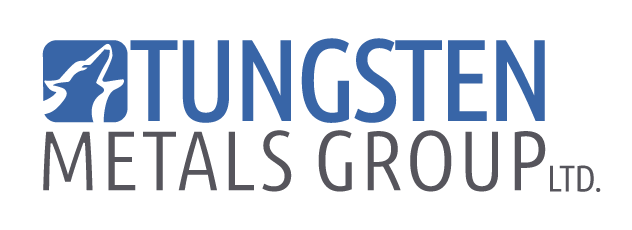Solar Breakthrough: Ultra-Thin CIGS Cells with Tungsten Disulfide
Imagine a world where solar panels are not just efficient but also cost-effective and ultra-thin. That dream is edging closer to reality thanks to groundbreaking research on copper indium gallium diselenide (CIGS) solar cells, enhanced by tungsten disulfide (WS2). These cells are redefining what’s possible in renewable energy.
Why Tungsten Disulfide Is a Game-Changer
Tungsten disulfide isn’t your everyday material. It’s a slick, durable compound often used in harsh industrial environments. Now, researchers have found a way to harness its unique properties for solar energy. By integrating WS2 into the back surface field (BSF) layer of CIGS solar cells, scientists have unlocked a host of benefits:
Enhanced Efficiency: The new design achieves an impressive 25.7% efficiency.
Reduced Material Costs: Using ultra-thin layers cuts down on expensive materials like indium and gallium.
Improved Light Absorption: The BSF layer reflects more light back into the cell, increasing energy output.
These benefits make WS2 a valuable addition to traditional solar cell designs.
The Science Behind the Magic
The researchers at India’s Visvesvaraya National Institute of Technology used advanced simulation software (SCAPS-1D) to test their novel solar cell structure. Here’s how the layers stack up:
Back Contact Layer: Made of nickel (Ni), it forms the base of the cell.
BSF Layer: Tungsten disulfide works here to reduce recombination losses and reflect light.
Absorber Layer: A 200-nanometer CIGS layer captures sunlight.
Buffer Layer: Also made of WS2, it facilitates efficient electron transport.
Window Layer: Zinc oxide (ZnO) ensures light reaches the absorber layer.
Front Electrode: Aluminum (Al) conducts the generated electricity.
By carefully optimizing these layers, the team achieved a record-breaking efficiency.
Read more here.
Impressive Results and Comparisons
So, how does this new solar cell stack up against traditional tech?
Power Conversion Efficiency: At 25.7%, these cells outperform many conventional CIGS cells, which usually hover around 20% efficiency.
Material Usage: The thinner layers significantly reduce the need for rare materials, making production cheaper and more sustainable.
Voltage and Current: With an open-circuit voltage of 0.81 V and a short-circuit current density of 39.33 mA/cm², the performance metrics are truly impressive.
In a nutshell, this innovation doesn’t just tweak existing technology—it redefines the possibilities of solar energy. These results are groundbreaking for CIGS (copper indium gallium diselenide) solar cells. Traditional CIGS cells typically achieve efficiencies of around 18-20% in commercial production, while high-end lab-scale versions peak at around 23% efficiency. This new design outperforms both, setting a new benchmark with its 25.7% efficiency.
Key Improvements Over Traditional Solar Technology
Higher Energy Output
The enhanced efficiency means the new cell can generate more power from the same amount of sunlight compared to standard CIGS cells. This makes it more suitable for applications where space is limited, such as rooftop solar panels or portable solar devices.
Better Light Management
The tungsten disulfide (WS₂) back surface field (BSF) layer reflects unused light back into the absorber layer. Traditional cells lack this advanced reflective capability, leading to higher light losses and lower overall efficiency.
Reduced Material Use
Traditional CIGS cells require thicker absorber layers (around 2,000 nm) to achieve similar performance. The new design uses a thinner 200 nm absorber layer, reducing the consumption of rare and costly materials like indium and gallium.
Lower Resistance for Improved Performance
The cell’s low series resistance and high shunt resistance help maximize current flow. These electrical properties ensure that less energy is lost during operation, a common issue in older designs.
Lower Defect Sensitivity
By fine-tuning the material and structure, the researchers reduced defects in the absorber layer. Defects in traditional solar cells can trap electrons and holes, leading to efficiency losses.
Why This Matters for the Future
The implications of this breakthrough go far beyond academic research. Here’s why it matters:
Lower Costs: Affordable solar panels mean renewable energy becomes accessible to more people. Compared to conventional solar technology like silicon-based panels, the new cell provides a competitive alternative with the added benefit of lower production costs. This more cost-effective path to comparable performance will be key especially in regions with resource constraints or limited manufacturing budgets.
Energy Independence: Countries can reduce their reliance on fossil fuels by adopting efficient solar tech.
Environmental Impact: Cutting down on rare materials minimizes mining and its associated ecological damage.
As the world moves toward a greener future, innovations like this are paving the way. By addressing the limitations of traditional CIGS and silicon solar cells, this breakthrough creates opportunities for more efficient and affordable renewable energy solutions. This step forward not only improves power generation but also aligns with global goals for sustainability and energy accessibility.
FAQs
-
WS2’s ability to act as a reflective and electron-transport layer sets it apart. It improves efficiency while reducing material usage.
-
They offer higher efficiency, lower material costs, and better sustainability—a win-win for manufacturers and consumers.
-
While still in the research phase, the promising results suggest that mass production could be on the horizon within a few years.
Ultra-thin CIGS solar cells enhanced with tungsten disulfide represent a giant leap forward in renewable energy. With record-breaking efficiency, reduced costs, and a lighter environmental footprint, this technology has the potential to transform how we harness solar power.


